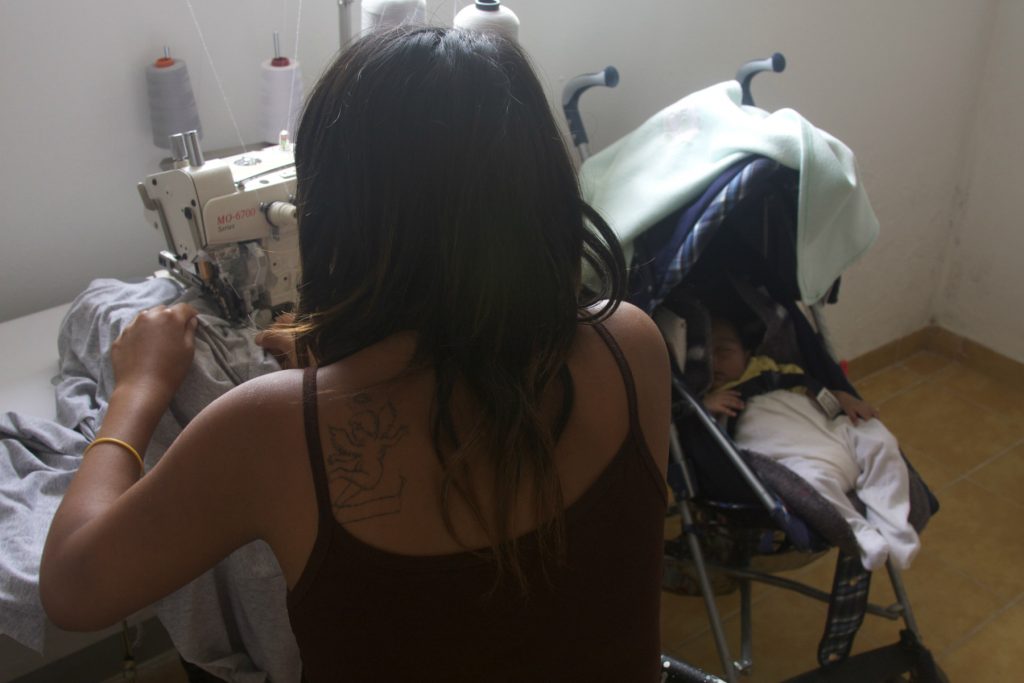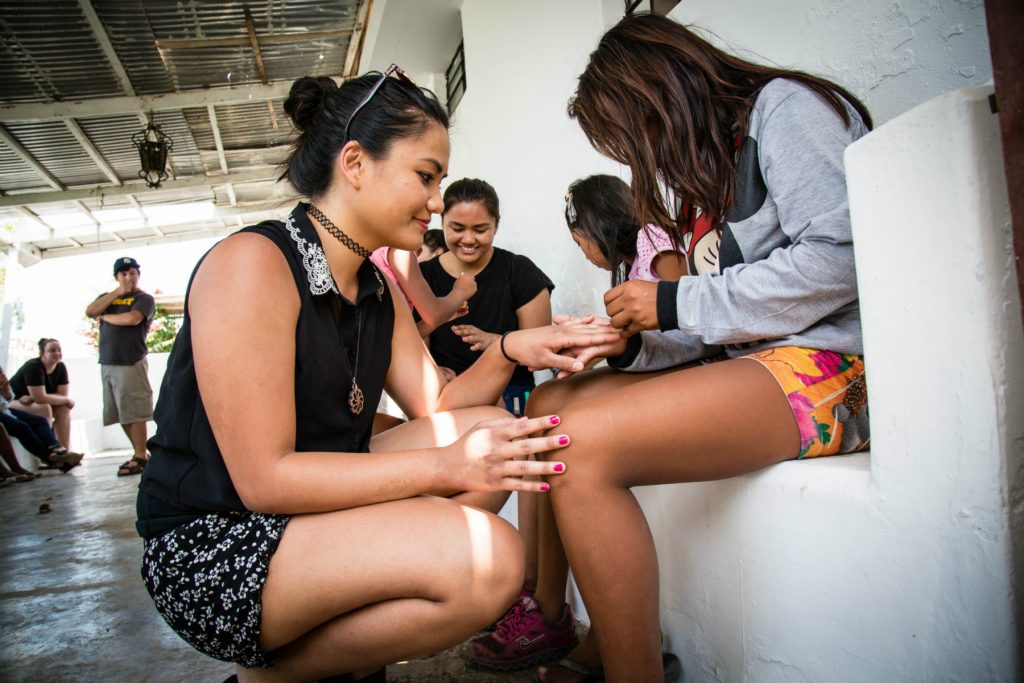Whether sitting down to a meal with a local family or participating in a walking tour with someone eager to point out mom-and-pop businesses and restaurants, research indicates travelers increasingly seek out opportunities for learning and are interested in expanding their worldview. This shift from purely adrenaline-induced adventures to on-the-ground experiential activities has fueled development of and interest in opportunities to learn about destinations’ day-to-day lifestyles and challenges.
The idea isn’t new: The ill-conceived “slum tourism” was thrust into the spotlight in 2009 after Slumdog Millionaire became a hit, for example. However, thoughtfully considered and appropriately executed experiences that reveal a destination’s reality — for better or for worse — let travelers understand a place and its people, culture, and history on a deeper level.

On 30 July, the United Nations recognizes the World Day Against Trafficking in Persons to bring attention to a crime that exploits countless children, women, and men every single day. The reality is human trafficking takes place in many popular tourist destinations, and travelers even feed into the problem at times. Giving travelers the chance to bear witness to the systemic problem as Crooked Trails does reveals a ground-level perspective of a universal issue and also highlights work being done by on-the-ground organizations to address local problems.
Observing local people in action and having in-depth conversations with them to more fully understand a destination beyond its popular attractions and beautiful backdrops is a type of experience that can facilitate adventure travel as a force for good. Though tour operators offering these experiences are not in the business of “solving” problems like human trafficking, travelers end their trips with a better understanding of a destination’s challenges and often an interest in educating others and devoting their own time, effort, and financial resources to support these local organizations. “These experiences can be very transformational,” said Malia Everette, CEO and founder of AltruVistas. “People walk away with a deeper understanding of the issue. We hear it over and over again that people read the reports and are donors to organizations, but they see it in action and they understand it at such a different level.”
With this traveler mindset shift that seeks out experiences like those offered by Crooked Trails, more tour operators may be interested in learning how they can appropriately add these elements into their trips without exploiting local communities. To offer sound advice and tips, we turned to Everette, who built her company around engaging travelers with local communities addressing universal and human rights issues like sex trafficking, race relations, public health, and resiliency in the face of natural disasters. Prior to that, she was the director of Global Exchange’s popular reality tours program, and she’s been working for more than 20 years on developing culturally appropriate travel experiences that maximize the benefits and full potential of tourism. “As tour operators incorporate more of these kinds of experiences and exchanges with community groups, it’s an opportunity for us not to gloss over the struggles our communities have and that we share with each other as human beings,” she said.
Understand the right partnerships don’t happen overnight.
In establishing on-the-ground relationships, it’s important to vet all potential partners carefully to ensure organizations are legitimate, financial support is properly used, and the local community is actually benefiting from the organization’s services. “It takes time to develop a trusting relationship with your NGO partners and for your travelers to feel comfortable going into these spaces and situations,” Everette said.
AltruVistas approaches partnership building in two ways: In destinations where the organization has a well-established, local contact like a program director who knows the destination intimately, that local contact is the primary person who vets opportunities and builds the appropriate relationships. Conversely, when developing new itineraries or working in new destinations, Everette consults with international organizations specifically addressing these issues, such as ECPAT, which works on advocacy related to sexual exploitation in children. In turn, these international organizations can help connect tour operators with on-the-ground NGOs and initiatives.
Provide pre-trip information that enhances the experience in a meaningful way.
If creating a specialized itinerary around an advocacy issue, make it clear what the theme of the trip is. Even if the advocacy-focused part is only a small portion of the itinerary, explain why it is important and provide background information about the destination and the status of the issue in the destination. “Share articles, resources, and information from the organizations you’ll be visiting,” Everette said. Additionally, encourage travelers to ask questions during pre-trip calls or leading up to departure so their expectations are aligned with the experience’s reality.
Establish a code of conduct that specifically outlines photography guidelines.
Build a code of conduct into the trip terms and conditions that outlines expectations and prohibits exploitative behavior. This includes banning participation in or endorsement of commercial sex activities, avoiding exploitation of children, avoiding making promises (such as raising money) that you can’t keep, and limiting the negative impacts to daily lifestyles of the local people. “We have a code of conduct that we maintain and reiterate on these advocacy delegations, in particular,” Everette said. Not only does the code of conduct state traveler expectations, but it increases awareness about the issue.
In the code of conduct, specifically outline photography expectations. At AltruVistas, this includes not taking pictures of the community. “It’s really important we’re not posting pictures of somebody without their consent, and a lot of times they’re minors.” Be clear with travelers what they cannot photograph, but provide some alternatives as well. For example, it may be okay to take pictures with the outside of a building, an organization’s sign, the director of an organization, or simply with other travelers in the delegation.
Witnessing advocacy in action is important, but support on-the-ground efforts as well.
Avoid seeking out situations that exploit local people without spending time, effort, and financial resources to support entities working to address advocacy issues. “Especially with a lot of our women’s trips, whether cultural or educational exchanges, we always try to look at one NGO or organization that talks about the status of the situation in a country, and we also look at and meet with an organization that provides services for vulnerable women and girls,” Everette said. “This way we can meet and learn from local counterparts and women, and it also allows the trip to support these organizations.”
Build in time for interaction.
It’s important for travelers to listen to and learn about the experiences of vulnerable populations and organizations working on advocacy issues, but this shouldn’t be a one-sided conversation that can turn people into a type of living exhibit. Cross-cultural experiences are most meaningful if there is interaction and opportunity for people to talk and get to know each other simply as people with common universal needs, interests, and desires.

Everette said when she leads school groups, students get ample time to chat about everyday topics, which helps deliver the message that people are people the world over, despite the local, nuanced situations people live through on a day-to-day basis. “They chat about what they’re doing, how their lives are going. They have a meal together,” she said. “There’s definitely an element of exchange and also play that is involved.”
Integrate activities that are actually beneficial to the community.
Invest time and effort with on-the-ground partners to find out if and how travelers can insert themselves in helping with advocacy efforts in the short time they are in a destination. Through AltruVistas, for example, some school and church groups are interested in service learning opportunities, and the company’s program director is responsible for determining how this interest can be met. “They’re the ones who chat with the local community to find out what’s necessary, what’s needed, or what would be beneficial to the community,” she said. For example, if an organization works with a school to keep young girls off the streets, there may be a need for school supplies. Or, kids who have been exploited in trafficking rings may benefit from pick-up soccer games or normal interaction appropriate for children. Regardless of what the needs may be, it’s up to the local organization and community to dictate.
Continue to communicate with local partners about what they want and expect from the partnership over time.
It is essential that any time spent with local organizations is done on their terms. Once visits with local organizations are underway, tour operators need to remain aware of ongoing and changing needs in regard to the partnership. With new relationships in particular, Everette’s company engages local partners after trips with a host evaluation to find out what worked about the visit, what could be done differently in the future, and what the local organization wants travelers to take away from the experience. “This helps us redefine how we’re going to work with local communities,” she said. “Plus, there’s fine-tuning we can do because we have a certain level of trust with the organizer. You want it to be a symbiotic relationship, not an extractive one.”
